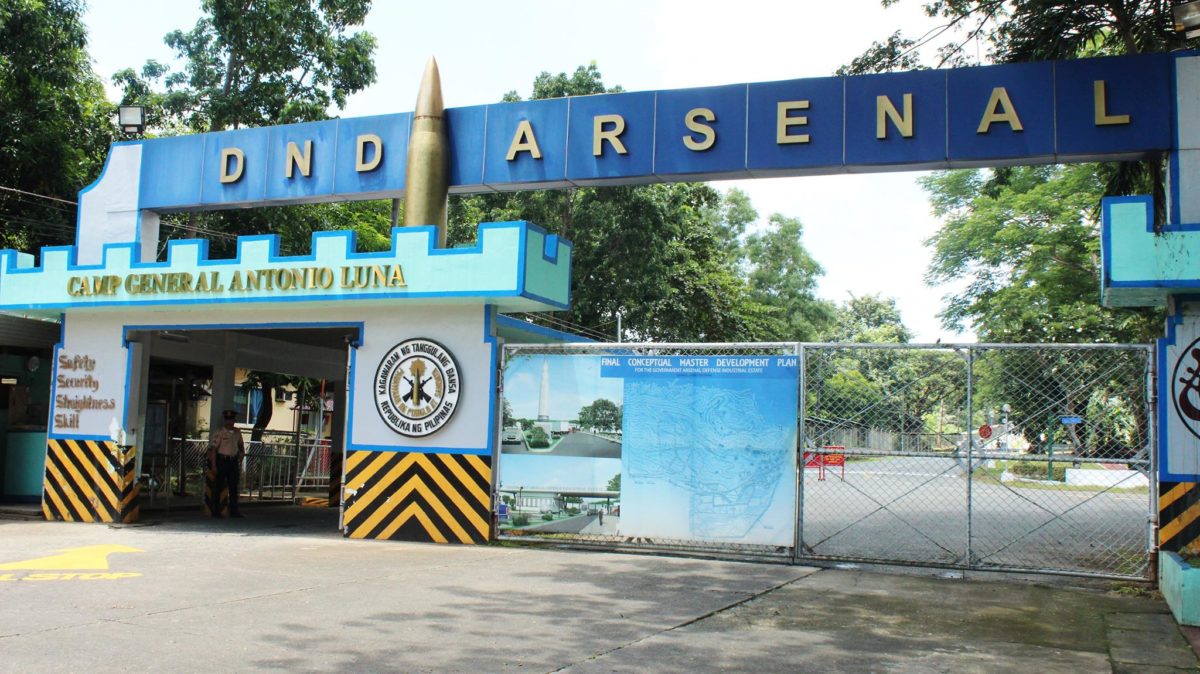
By NORMAN SISON
“THIS is what we need to face China” was the recurring comment from visitors as they admired four types of automatic rifles displayed on a rack at a recent gun show held at SM Megamall.
Designed by Government Arsenal, an agency of the Department of National Defense, the rifles are enhanced versions of the M16 and are scheduled to replace the Vietnam War-era M16 models of the Philippine Army and other security forces for added firepower.
One is a sniper rifle variant, which can take out targets at 1,000 meters. Another is an assault rifle version that fires bullets larger than those used by M16s, packing more punch.
Thousands of enthusiasts troop to the annual gun show, going for 20 years now, held by the Association of Firearms and Ammunition Dealers of the Philippines. But the July 19-23 expo was the first time that Arsenal participated in the event.
Unlike the dozens of gun makers and dealers at the expo, Arsenal was not there to sell but to give a message, particularly, about what it does and what it can do to modernize the feeble Philippine military.
For now, Arsenal’s facilities at Camp General Antonio Luna in Bataan Province churn out ammunition. Soon production of the new rifles will begin once the necessary paperwork is done. The most significant about the rifles is that they will be produced locally as part of efforts to the make the military self-reliant, according to Government Arsenal Director Jonathan Martir.
“Our armed forces now is more a like a consumer armed forces because it buys everything from abroad. You have an army that buys its camouflage uniforms from China. The navy and the marines buy their camouflage uniforms from Taiwan, combat boots from Taiwan and Singapore,” says the former Philippine Marine general. “The only last thing that is proudly Philippine-made – as we say in the Arsenal – is our ammunition.”
In 1987 President Corazon Aquino issued an executive order giving Government Arsenal the job of designing and producing weapons for the military, which fell from being the envy of Asia in the 1970s to being among the world’s weakest. It will remain the weakest unless the Philippines develops its own defense industry. “We should have a Filipino-first mentality,” Martir says.
He adds that a law might be needed requiring the armed forces to source its weapons and equipment locally when possible. He cited a recent bidding held by the Philippine National Police for the supply of 59,000 9-mm pistols. The contract initially went to a local dealer that sells Israeli-made Jericho pistols. But the winner was disqualified and the contract went to the second lowest bidder, which imports the lightweight Glock, made in Austria.
 Landing in fourth place was Armscor, the only Philippine gun maker among the bidders. The bidding results triggered protests from Filipino nationalists angry at China’s territorial grab in the South China Sea, also referred as West Philippine Sea.
Landing in fourth place was Armscor, the only Philippine gun maker among the bidders. The bidding results triggered protests from Filipino nationalists angry at China’s territorial grab in the South China Sea, also referred as West Philippine Sea.
George Chua, Armscor executive vice president and chief operating officer, says the bidding should’ve been limited to local gun makers if the government wants a local defense industry to develop.
Established in 1905, Armscor is the Philippines’ oldest gun maker and among the country’s big three. Armscor had the largest exhibit at the expo, where it launched its new company logo as part of its bid to become a known international brand with the likes of Colt and Walther.
Armscor exports to 60 countries. Its most popular firearm is the 45-caliber M1911 pistol, which made its debut in the Philippines in 1911 when it became the US Army’s standard-issue sidearm.
Chua says the Philippines’ territorial dispute with China has opened an opportunity for a local defense industry to grow.
In his July 23 State of the Nation Address, President Aquino refused to budge in the dispute with China and pledged to modernize the military. “If someone enters your yard and told you he owns it, will you allow that?,” he told Congress. “And so I ask for solidarity from our people regarding this issue. Let us speak with one voice.”
What is seen as China’s bullying “has raised the awareness of the people about our territorial rights,” Chua stresses. “It has, in a way, unified Filipinos. The Philippines is involved here. Not the people of Palawan or Zambales. Pilipinas. But we need to translate that awareness into government action.”
For Chua, time is of the essence. “It cannot be through the bidding process. Because during times of peace and plenty, everybody will try to get the business, everybody will give you a cheap price. But you have to remember that is not always going to be the case,” he says.
He suggests that Philippine defense officials need to think far into the future like chess players planning several moves in advance explaining its advantage: “When the situation becomes urgent, what are you going to do? The country that we’re buying weapons from might become our enemy someday. They are not going to sell to us weapons that we can use against them.”
